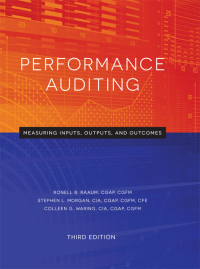Answered step by step
Verified Expert Solution
Question
1 Approved Answer
Answer last part A,B,C please with answer rounded to the hundredths place In your new role as compensation analyst, you have been asked to estimate

Answer last part A,B,C please with answer rounded to the hundredths place
In your new role as compensation analyst, you have been asked to estimate the dollar amount of the profit-sharing pool based on three approaches as well as the allocation of profit-sharing awards to eligible employees. The company's profits equal $35 million. You are considering the following three formulas for determining the total profit-sharing pool First-Dollar of Profits: The company agrees to share 2.5 percent of all profits up to $12 million. Graduated First-Dollar-of-Profits: The company agrees to share 3.0 percent of all profits up to $15 million, and 5.0 percent of all profits up to $40 million. Profitability Threshold Formula: The company will share 2.5 percent of the profits above $10 million up to $17 million. There are 230 employees whose total annual base pay equals $2,100,000. The total profit-sharing pool for: (Round your answers to the nearest hundredths place.) (a) First-dollar of profits is $ 300000 (b) Graduated first-dollar of profits is $ 1750000 (c) Profitability threshold formula $ 425000 Based on the equal payments formula, the average profit-sharing award per employee (based on the total profit-sharing pools) for: (Round your answers to the nearest hundredths place.) (a) First-dollar of profits is $ 1304.35 per employee (b) Graduated first-dollar-of-profits is $ 7608.70 per employee (c) Profitability threshold formula is $ 1847.83 per employee (a) For First-Dollar of Profits Profit Sharing Pool, the annual profit-sharing awards based on proportional payments for: (Round your answers to the nearest hundredths place.) Jim, whose annual base pay equals $55,000 = $ 8000 Margaret, whose annual base pay is $125,000 = $ Ella, whose annual base pay is $210,000 = $ (b) For Graduated First Dollar of Profits Profit Sharing Pool, the annual profit-sharing awards based on proportional payments for: (Round your answers to the nearest hundredths place.) Jim, whose annual base pay equals $55,000 = $ Margaret, whose annual base pay is $125,000 = $ Ella, whose annual base pay is $210,000 = $ (c) For Profitability Threshold Formula Pool, the annual profit-sharing awards based on proportional payments for: (Round your answers to the nearest hundredths place.) Jim, whose annual base pay equals $55,000 = $ Margaret, whose annual base pay is $125,000 = $ Ella, whose annual base pay is $210,000 = $ In your new role as compensation analyst, you have been asked to estimate the dollar amount of the profit-sharing pool based on three approaches as well as the allocation of profit-sharing awards to eligible employees. The company's profits equal $35 million. You are considering the following three formulas for determining the total profit-sharing pool First-Dollar of Profits: The company agrees to share 2.5 percent of all profits up to $12 million. Graduated First-Dollar-of-Profits: The company agrees to share 3.0 percent of all profits up to $15 million, and 5.0 percent of all profits up to $40 million. Profitability Threshold Formula: The company will share 2.5 percent of the profits above $10 million up to $17 million. There are 230 employees whose total annual base pay equals $2,100,000. The total profit-sharing pool for: (Round your answers to the nearest hundredths place.) (a) First-dollar of profits is $ 300000 (b) Graduated first-dollar of profits is $ 1750000 (c) Profitability threshold formula $ 425000 Based on the equal payments formula, the average profit-sharing award per employee (based on the total profit-sharing pools) for: (Round your answers to the nearest hundredths place.) (a) First-dollar of profits is $ 1304.35 per employee (b) Graduated first-dollar-of-profits is $ 7608.70 per employee (c) Profitability threshold formula is $ 1847.83 per employee (a) For First-Dollar of Profits Profit Sharing Pool, the annual profit-sharing awards based on proportional payments for: (Round your answers to the nearest hundredths place.) Jim, whose annual base pay equals $55,000 = $ 8000 Margaret, whose annual base pay is $125,000 = $ Ella, whose annual base pay is $210,000 = $ (b) For Graduated First Dollar of Profits Profit Sharing Pool, the annual profit-sharing awards based on proportional payments for: (Round your answers to the nearest hundredths place.) Jim, whose annual base pay equals $55,000 = $ Margaret, whose annual base pay is $125,000 = $ Ella, whose annual base pay is $210,000 = $ (c) For Profitability Threshold Formula Pool, the annual profit-sharing awards based on proportional payments for: (Round your answers to the nearest hundredths place.) Jim, whose annual base pay equals $55,000 = $ Margaret, whose annual base pay is $125,000 = $ Ella, whose annual base pay is $210,000 = $Step by Step Solution
There are 3 Steps involved in it
Step: 1

Get Instant Access to Expert-Tailored Solutions
See step-by-step solutions with expert insights and AI powered tools for academic success
Step: 2

Step: 3

Ace Your Homework with AI
Get the answers you need in no time with our AI-driven, step-by-step assistance
Get Started


